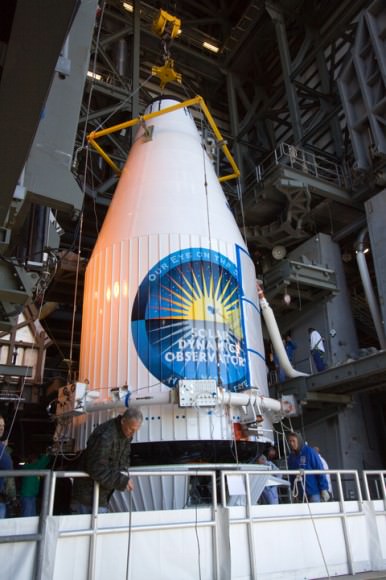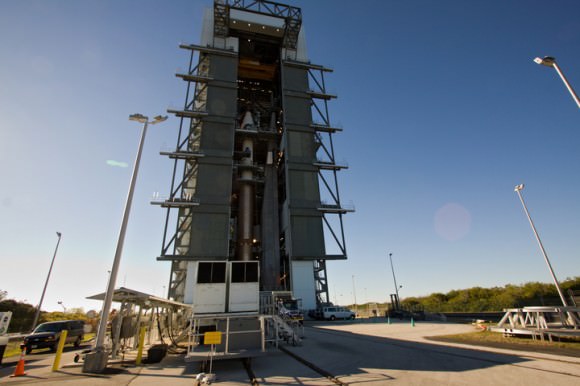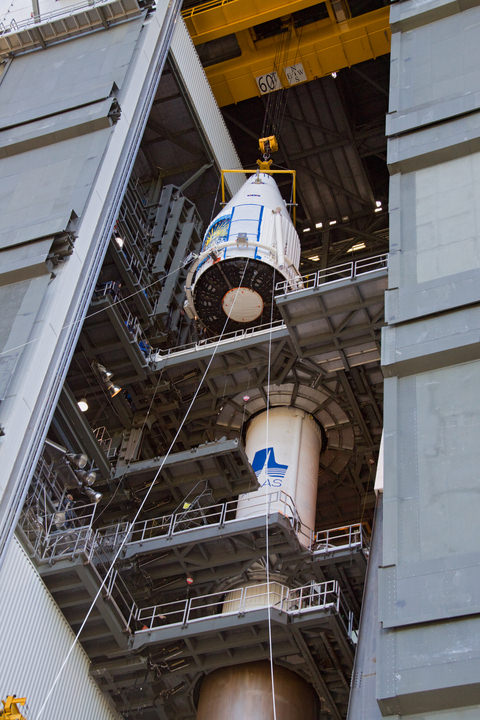[/caption]The “Crown Jewel” of NASA’s solar science research fleet, the Solar Dynamics Observatory, or SDO, was transported from the Astrotech payload processing facility outside KSC to the Vertical Integration Facility (VIF) at Launch Complex 41 in the overnight hours of Jan 26. It’s standard operating procedure to transport such highly valuable payloads after midnight, when the least amount of traffic is on the road in order to minimize any possibility for an accident. This journey was in preparation for connecting to its Atlas rocket. The $848 million spacecraft was moved at about 10 MPH on a specially designed flat bed truck for a trip lasting roughly four hours.

The Flight Readiness Review is set for Feb. 5 and pad rollout on Feb. 8. NASA is currently targeting Feb 9 as the launch date with a 1 hour launch window starting at 10:30 AM EST, just 2 days after the scheduled Feb. 7 blast off of Shuttle Endeavour and Tranquility module on the STS 130 mission to the ISS. If STS 130 is delayed, SDO would likewise be delayed on a matching day by day basis. A minimum turnaround time of 48 hours is required to reconfigure all telemetry and tracking systems and hardware on the Air Force Eastern range between launches.
I’ll be reporting from the launch pads for both SDO and STS 130.
Read my earlier preview article on SDO:
NASA advanced Solar Observatory nearing February launch; will send IMAX like movies daily
See a cool new video explaining SDO here:
The Solar Dynamics Observatory in 3.5 Minutes
Learn more at the NASA SDO Website



When in the history of solar research have we been blessed with so many dedicated missions? Makes the days of Solar Max seem quaint.